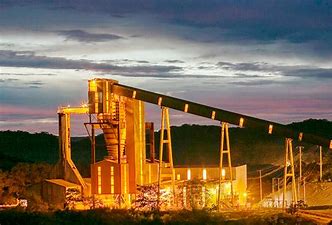Move is aimed at reducing costs locally after federal measures failed to reduce diesel prices at pumps as much as those of other fuels
07/12/2022
/i.s3.glbimg.com/v1/AUTH_37554604729d4b2f9f3eb9ad8a691345/internal_photos/bs/2022/y/Q/NA7U2ARfGfdBorNEqOyg/99826974-bras-c3-adlia-df-2011-07-2022-20a-20presidente-20da-20hungria-20katalin-20nov-c3-a1k-20-c3-a9-20recebida-20pelo-20presidente-20da.jpg)
Hungary’s president Katalin Novák and Brazil’s president Jair Bolsonaro met on July 11 in Brasília — Foto: José Cruz/Agência Brasil/Agência O Globo
President Jair Bolsonaro said Monday the Brazilian government will try to make it possible to start importing diesel from Russia within 60 days.
The move is aimed at reducing costs locally after federal measures to reduce sales tax ICMS levied on fuels failed to reduce diesel prices at the pumps as much as gasoline and ethanol prices. The rate charged by states on diesel was already lower than the 17% cap defined as of this month for services considered essential.
“It is agreed. In 60 days, it can already start arriving here. There is already this possibility,” said Mr. Bolsonaro, in an interview at the presidential palace, in Brasília. “We import almost 30% [of the diesel consumed in the country]. You have to import diesel from those who are selling it cheaper, not from those who are selling it even more expensive [than before].”
Less than three months before the elections, the president has been pressuring Petrobras not to pass on any price increases. The diesel price hike, besides the impact on inflation, directly affects truck drivers, who massively supported Mr. Bolsonaro when he was elected president, in 2018. Brazil will hold elections on October 2. Mr. Bolsonaro, who is running for reelection, is trailing former president Luiz Inácio Lula da Silva in the polls.
Referring to the new CEO of state-owned oil company Petrobras, Caio Mário Paes de Andrade, Mr. Bolsonaro also called for prices at the pump to fall if oil drops below $100 a barrel.
“If prices increase here, so does Petrobras’s profit. Petrobras now has a CEO that will respect the social purpose imposed by the state-owned companies’ law. Brent oil has fallen from $100 then it went back up a little. I believe that if it is consistent, a little below $100, there is room to reduce prices in refineries,” he said.
As for imports of diesel from Russia, the president celebrated the evolution of partnerships with the country and its decision to remain neutral after Russian leader Vladimir Putin decided to invade Ukraine, launching a five-month war.
“Russia continues to do business with the whole world. It seems that the economic sanctions didn’t work out. So much so that Germany has now had 40% of its gas cut off. Europe is largely dependent on gas imports from Russia. The ruble, which people thought would melt down, is the currency that appreciated the most this year. It is a great country, twice the size of ours. And Brazil maintained a balanced position. Of course, we would like there not to be a war,” he said.
After receiving the official visit from the president of Hungary, Katalin Novák, Mr. Bolsonaro made another statement, assuring that he will do his best for peace in the conflict. He also unveiled he will speak with Ukraine President Volodymyr Zelensky on July 18.
If confirmed, this will be the first contact between Mr. Bolsonaro and the president of the country that has been waging a war against Russia since February, when its territory was invaded.
“We exchanged some remarks about the conflict going on near Hungary, the Russia-Ukraine issue. I told her that I have a phone call with Zelensky scheduled for July 18, just as after my visit to Russia, before the conflict, I had another conversation with President Putin,” Mr. Bolsonaro told reporters. “We want, more and more, to do what is possible for peace. We know that the truth often hurts, but there is no other way.”
In the speech, the president thanked Hungary for its support of the Mercosur-European Union trade agreement and Brazil’s accession to the OECD.
During his visit to Eastern Europe in February, days before the war started, Mr. Bolsonaro met with the Prime Minister of Hungary, Viktor Órban. At the time, he referred to the far-right leader as “brother” and highlighted the political and ideological affinities between the two.
* By Matheus Schuch — Brasília
Source: Valor International

/i.s3.glbimg.com/v1/AUTH_37554604729d4b2f9f3eb9ad8a691345/internal_photos/bs/2022/6/f/AYProaQ9iFzu279wT9aA/18739180033-f931763a2c-o.jpg)
/i.s3.glbimg.com/v1/AUTH_37554604729d4b2f9f3eb9ad8a691345/internal_photos/bs/2022/m/r/V5II8RSAWYdvHkm3mhYQ/fernando-prefer-fundo.jpg)
/i.s3.glbimg.com/v1/AUTH_37554604729d4b2f9f3eb9ad8a691345/internal_photos/bs/2022/q/A/7EyAtbRoKSdnqzT6LvAA/11emp-100-ambar-b3-img01.jpg)
/i.s3.glbimg.com/v1/AUTH_37554604729d4b2f9f3eb9ad8a691345/internal_photos/bs/2022/9/6/9DENJZRsqBIKbAh24qkA/11emp-100-tv-b6-img01.jpg)

/i.s3.glbimg.com/v1/AUTH_37554604729d4b2f9f3eb9ad8a691345/internal_photos/bs/2022/i/B/CulsCBT8eEcGFVqqSVzA/76637742-brasil-20-20bras-c3-adlia-20-20bsb-20-20pa-20-2009-05-2018-20-20pa-20-20-20lift-bc-20o-20presidente-20do-20banco-20central.jpg)

/i.s3.glbimg.com/v1/AUTH_37554604729d4b2f9f3eb9ad8a691345/internal_photos/bs/2022/Q/P/I0izuNRD6pkeYUKQFNmw/08emp-100-aena-b3-img01.jpg)
/i.s3.glbimg.com/v1/AUTH_37554604729d4b2f9f3eb9ad8a691345/internal_photos/bs/2022/3/6/58xOpxQhOx0uXTgd1Q2w/08bra-100-troca-a4-img01.jpg)